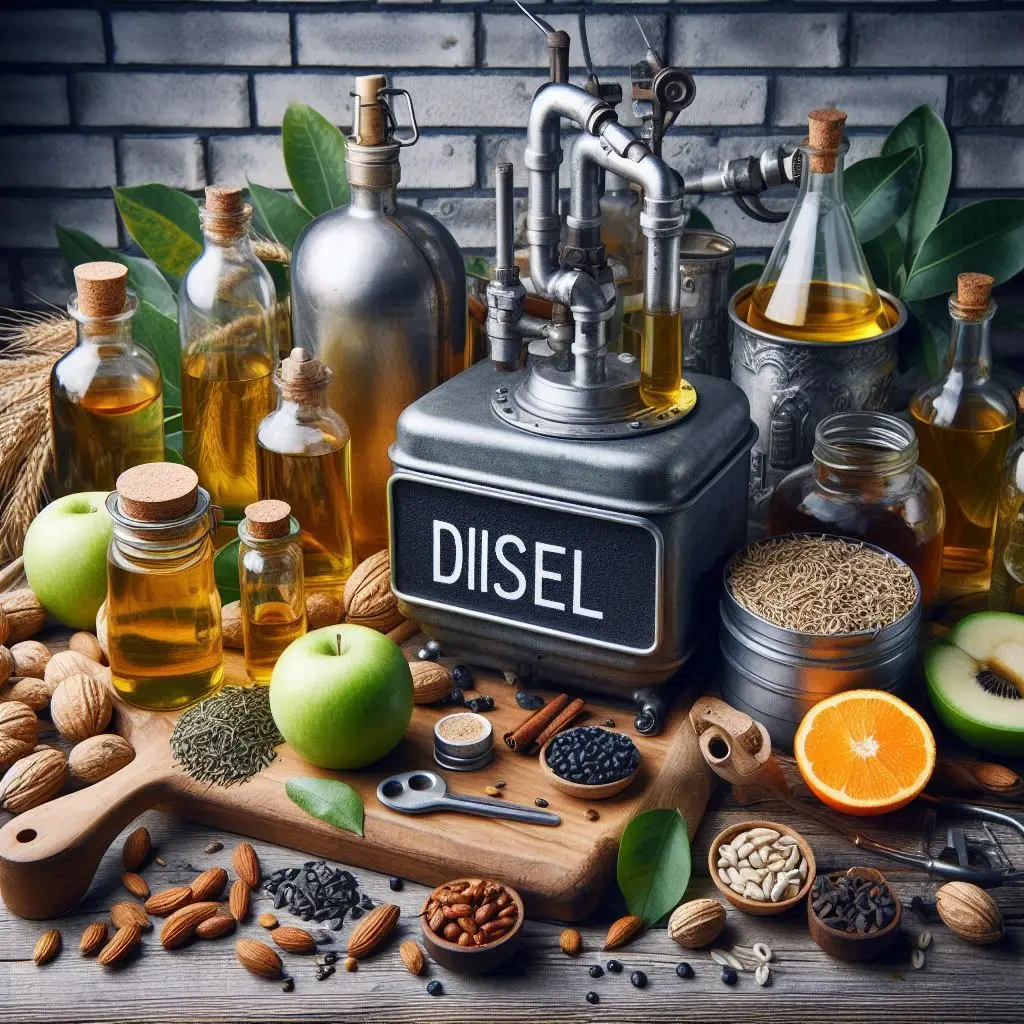
Homemade diesel fuel
Introduction:
I'll go into detail about the steps involved in making homemade diesel fuel in this tutorial, including its ingredients, manufacturing processes, and important factors.
Diesel fuel comes from the refining of petroleum, which is a crucial component in powering engines. But as people's concerns about sustainability and independence have grown, a lot more people are looking into different ways to make diesel fuel at home. In addition to being an interesting project, making your diesel fuel helps you become less dependent on fossil resources.
Knowing About Diesel Fuel:
Diesel fuel is a complicated combination of hydrocarbons with different molecular weights that are typically generated from crude oil. Alkanes, cycloalkanes, and aromatic hydrocarbons are among its main components. The viscosity, cetane number, and sulfur level of diesel fuel are important characteristics that affect both its environmental effect and the efficiency of combustion.
Components of DIY Diesel Fuel:
Vegetable Oil: The main feedstock for the creation of DIY diesel fuel is leftover cooking oil or virgin vegetable oils like soybean, canola, or palm oil. Triglycerides found in these oils are trans-esterified to produce biodiesel.
Methanol: Often produced from biomass or natural gas, methanol is an alcohol that catalyzes the transesterification process.
Potassium hydroxide (KOH) and sodium hydroxide (NaOH) are alkaline catalysts that help methanol and vegetable oil react to produce glycerol and biodiesel.
Method of Production:
How to Prepare Vegetable Oil: Filter the vegetable oil to get rid of the water content and contaminants. The oil may be heated to between 130 and 150°C to help with the transesterification process by lowering its viscosity.
Transesterification: In a regulated atmosphere, combine the methanol, heating vegetable oil, and selected catalyst (KOH or NaOH). Triglycerides in the oil react with methanol when a catalyst is present, producing glycerol and biodiesel as a byproduct.
Separation: Let the mixture settle so that the glycerol and biodiesel layers may be separated. As a byproduct of transesterification, glycerol may be used in several ways and processed further.
Cleaning and Desiccation: Use water to rinse the biodiesel and get rid of any last traces of contaminants and catalysts. Dry the biodiesel after washing to remove any remaining water, guaranteeing its purity and stability.
Quality Testing: To make sure the biodiesel generated satisfies industry requirements, do quality tests such as viscosity, acidity, and purity evaluation.
Safety precautions and considerations:
Appropriate Ventilation: To avoid the buildup of hazardous gases and vapors emitted during the manufacturing process, work in an area with enough ventilation.
Safety Gear: To reduce the chance of chemical exposure, put on the proper personal protection equipment, such as gloves and goggles.
Compatibility of Equipment: To prevent corrosion and contamination, use equipment composed of materials resistant to the chemicals used in the manufacturing of biodiesel.
Waste Management: To reduce the effect on the environment, dispose of waste materials (such as glycerol and wash water) appropriately and by local rules. Furthermore, producing diesel fuel at home gives people and communities a degree of independence and self-sufficiency that may be uplifting. Households may protect themselves against changes in international oil prices and the geopolitical unrest that often accompanies dependence on imported energy sources by minimizing their usage of conventional petroleum-based fuels. A feeling of resilience is also promoted by this localized approach to fuel generation if supply routes are unexpectedly disrupted by crises or natural disasters.
In addition, the process of making homemade diesel fuel may be used as a teaching tool to help people learn more about environmental science, biofuel technology, and chemistry. Using practical experimentation and experiential learning, fans may acquire a significant understanding of the intricacies of fuel generation and the interdependencies of energy systems.
Apart from its pragmatic advantages, producing diesel fuel at home may aid in wider social objectives like cutting down on greenhouse gas emissions and alleviating the effects of climate change. When compared to traditional diesel made from fossil fuels, DIY fuel manufacturers may drastically reduce the carbon intensity of transportation fuels by using efficient production processes and renewable feedstocks like vegetable oil. This is in keeping with global initiatives to move toward a low-carbon economy and meet the goals set out in accords such as the Paris Agreement. It's crucial to understand that producing diesel fuel at home has its drawbacks and difficulties. DIY techniques may not be as scalable as they might be, and it could be difficult to meet consistent quality and purity requirements without access to specialized tools and knowledge. Furthermore, while producing biodiesel at home may be a greener option than petroleum diesel, its environmental effect varies depending on feedstock source, land usage, and energy inputs.
Although producing homemade diesel fuel has exciting prospects for sustainability, energy independence, and community resilience, it is essential to approach the process critically and with a dedication to ethical behavior. Through the integration of creativity, learning, and responsible management, people may help ensure that future generations have access to a more just and sustainable energy system.
In conclusion, producing your diesel fuel at home is a gratifying and sustainable substitute for traditional fuels derived from petroleum. People may help reduce carbon emissions and promote energy independence by using easily obtained components and simple manufacturing methods. But it's crucial to proceed cautiously while producing DIY gasoline, following safety procedures and quality requirements. Homemade diesel fuel is a real step toward a cleaner and more sustainable future as the globe shifts to renewable energy sources. We can create a more environmentally friendly future by embracing creativity and the do-it-yourself mentality.

